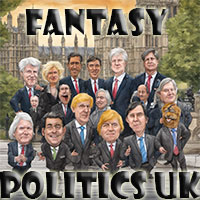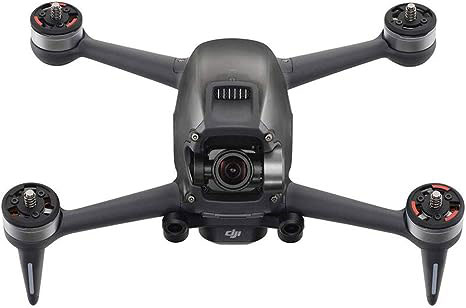Free Energy Devices
There are hundreds of videos claiming or promoting free energy devices...it's of interest to everybody if they are genuine. There are a few selected videos included below, YouTube has many more.
You can also view my ChatGPT conversation relating to free energy devices here:
https://chatgpt.com/share/6725d236-e5d8-8009-9e52-b52edcfd89fa
... feel free to add your thoughts to create an alternative Free Energy Machine design.
The concept of zero-point energy and free energy devices has long captivated the imaginations of both scientists and the public alike. Promising to harness the boundless energy of the universe, these theoretical devices are often touted as the key to unlocking a new age of limitless power, free from fossil fuels, pollution, and economic constraints. But are these devices rooted in genuine science, or are they simply the stuff of myth, pseudoscience, and wishful thinking?
This article delves into the reality behind zero-point energy and free energy devices, exploring their scientific foundations, the theoretical and practical challenges they face, and their prospects for becoming viable energy sources in the future. We will also examine the broader implications for society, energy infrastructure, and the environment if such technologies were ever realized.
1. Defining Zero-Point and Free Energy
At its most basic, free energy refers to the idea of extracting usable energy from sources that are either abundant or untapped, often without any ongoing input of fuel or other resources. The allure of free energy lies in the possibility of an inexhaustible and costless energy supply, which could revolutionize how we power our homes, industries, and vehicles.
- Zero-point energy (ZPE), on the other hand, is a concept rooted in quantum mechanics. It refers to the lowest possible energy state of a quantum system, a state where even in the absence of heat or external energy, the system still retains vacuum fluctuations and quantum fields. In this state, it is theorized that the universe contains a vast and nearly inexhaustible amount of energy that permeates all of space. The notion of harnessing zero-point energy is often cited as the ultimate form of free energy technology, as it could, in theory, tap into the very fabric of space-time itself to provide continuous energy.
- Other free energy concepts are more mechanical or electromagnetic in nature, ranging from perpetual motion machines to devices that allegedly generate power through magnetic fields, over-unity energy systems, or electrostatic forces. These systems are often considered controversial, as they frequently violate the laws of thermodynamics, particularly the notion that energy cannot be created or destroyed, only converted from one form to another.
Despite their differences, the common thread among zero-point and free energy devices is the promise of unlimited energy without significant inputs, raising the question of whether these technologies are genuinely possible or merely speculative.
2. Scientific Foundations: The Quantum Vacuum and Zero-Point Energy
The concept of zero-point energy comes from quantum field theory, which suggests that even in a vacuum devoid of matter, there are still fluctuations in energy due to Heisenberg’s uncertainty principle. In quantum physics, particles and fields can never have precisely zero energy; they always possess some residual energy, no matter how cold or empty the system is.
2.1 Vacuum Energy and the Casimir Effect
One of the most well-known demonstrations of zero-point energy is the Casimir effect, discovered by Dutch physicist Hendrik Casimir in 1948. The Casimir effect occurs when two uncharged, parallel plates are placed close to one another in a vacuum. According to quantum field theory, the energy density between the plates is slightly lower than the energy density in the surrounding vacuum, leading to a measurable attractive force between the plates. This force is a result of the vacuum energy, providing experimental evidence that zero-point energy is a real phenomenon.
However, the amount of energy generated by the Casimir effect is minuscule, and harnessing this energy for practical use remains a distant dream. The energy density of the quantum vacuum may be vast on a cosmological scale, but the challenge lies in finding a way to extract or manipulate this energy on a scale large enough to power devices or infrastructure.
2.2 Zero-Point Energy and Thermodynamics
One of the key challenges for any free energy device, particularly those based on zero-point energy, is the second law of thermodynamics, which states that energy systems tend to evolve toward a state of increased entropy or disorder. This law implies that energy cannot be extracted from a system without some form of input or degradation in energy quality.
Advocates of zero-point energy argue that vacuum fluctuations could provide a loophole to this law by supplying energy that is not dependent on traditional heat engines or chemical processes. Yet, mainstream physicists remain sceptical, as zero-point energy does not violate thermodynamics but rather exists as a fundamental part of it. Harnessing this energy, if possible, would require a way to manipulate quantum fields that goes far beyond current technology.
2.3 The Quantum Energy Problem
Physicists such as Richard Feynman and John Wheeler have pointed out that the energy present in the quantum vacuum is theoretically enormous. Some estimates suggest that each cubic centimetre of empty space could contain enough energy to power the entire world for a century. However, the challenge is not only accessing this energy but also doing so in a controlled, scalable manner. Extracting energy from the quantum vacuum requires new physics, which remains speculative and unproven.
3. Historical Attempts at Free Energy Devices
Throughout history, there have been numerous attempts to build machines that could seemingly generate energy from nothing. These devices have ranged from perpetual motion machines to magnetic motors that claim to produce more energy than they consume.
3.1 Perpetual Motion Machines
One of the most enduring myths in energy production is the idea of a perpetual motion machine—a device that once set in motion would continue to operate indefinitely without any external input of energy. These machines, however, directly violate the first law of thermodynamics (conservation of energy) and the second law (entropy increase), making them impossible according to our current understanding of physics.
Despite these limitations, many inventors have pursued the dream of perpetual motion, from Leonardo da Vinci to Johann Bessler, who claimed in the 18th century to have built a working perpetual motion machine. In modern times, such machines have taken on new forms, often incorporating magnetic fields or electrostatic forces, but all have ultimately failed to produce sustained, usable energy.
3.2 Magnetic Motors and Over-Unity Devices
Another popular form of free energy device is the magnetic motor, which claims to generate power by manipulating magnetic fields in a way that produces a net energy gain, a concept often referred to as over-unity. Over-unity devices are those that claim to produce more energy than they consume, thus violating the conservation of energy.
While inventors like Howard Johnson, Tom Bearden, and others have proposed magnetic motors that supposedly harness free energy, none have been demonstrated to work reliably under scientific scrutiny. Most scientists attribute the perceived gains in energy to measurement errors, hidden energy sources, or misunderstandings of magnetic forces.
3.3 Cold Fusion and LENR (Low Energy Nuclear Reactions)
The 1989 announcement by Martin Fleischmann and Stanley Pons of having discovered cold fusion, a process by which nuclear fusion reactions could occur at room temperature, generated massive excitement in the scientific community. Cold fusion, if possible, would provide a virtually limitless and clean source of energy. However, subsequent experiments failed to replicate their results reliably, and cold fusion became associated with pseudoscience.
In recent years, interest in low energy nuclear reactions (LENR) has resurfaced, with a small but dedicated group of researchers continuing to investigate the potential for nuclear reactions at lower energy levels than previously thought possible. While some experimental results have shown promise, the field remains controversial and far from achieving mainstream acceptance.
4. Modern Claims and Technologies: Separating Fact from Fiction
In the modern era, claims of free energy devices continue to surface, often accompanied by elaborate theories, patents, and demonstrations. However, most of these claims fall apart when subjected to rigorous testing or peer review. The vast majority of supposed free energy devices either do not work as advertised or require some hidden input of energy, debunking their claims of being truly "free."
4.1 Nikola Tesla and Wireless Energy
One of the most famous historical figures associated with free energy is Nikola Tesla, a visionary inventor who made groundbreaking contributions to electrical engineering. Tesla’s work on wireless energy transmission, specifically his Wardenclyffe Tower, has fuelled speculation that he was on the verge of developing a free energy device. Tesla himself made vague references to tapping into the energy of the Earth and atmosphere, leading some to believe he had discovered a way to harness zero-point energy.
However, Tesla’s actual work on wireless energy was grounded in well-understood principles of electromagnetic radiation and resonance, not free energy. His ideas for transmitting energy without wires were intended to distribute power generated by conventional means, not create energy from nothing.
4.2 Modern Devices and Patents
In recent decades, inventors like John Bedini, Tom Bearden, and others have patented devices that claim to produce free energy through a variety of mechanisms, from electromagnetic fields to kinetic energy devices. These devices are often marketed to the public as revolutionary breakthroughs, but few, if any, have been independently verified to work as claimed.
For instance, Bedini’s radiant energy devices and Bearden’s motionless electromagnetic generator (MEG) are two examples of over-unity devices that have generated significant interest but have not been proven to deliver sustainable, free energy under rigorous testing.
5. Challenges and Barriers to Free Energy Devices
The pursuit of free energy devices faces numerous challenges, both theoretical and practical. The primary barriers are rooted in physics, particularly the laws of thermodynamics, which place strict limits on how energy can be generated and utilized.
5.1 Thermodynamics: The Limits of Energy Conversion
The second law of thermodynamics is one of the most significant obstacles to free energy devices. This law states that in any closed system, the total entropy (or disorder) must always increase over time, which means that energy tends to disperse rather than concentrate. As a result, it is impossible to create a machine that can produce more energy than it consumes, as energy will always be lost to the surroundings in the form of heat or friction.
5.2 Energy Density and Scalability
Even if zero-point energy or other free energy sources could be harnessed, they would need to produce energy at a sufficient density and scale to be practical. The Casimir effect, for example, demonstrates the existence of vacuum energy, but the forces involved are so small that they are difficult to harness for practical purposes. Scaling such a technology to power a city or the world would require a significant breakthrough in materials science, quantum field theory, and energy storage.
5.3 Material Limitations and Engineering Challenges
In addition to the theoretical challenges, there are also significant material and engineering barriers to the development of free energy devices. Any device designed to tap into quantum fluctuations or other exotic energy sources would need to operate at extremely high or low temperatures or involve exotic materials capable of withstanding the stresses involved. Building such devices is currently beyond our engineering capabilities.
6. The Future of Energy: Realistic Alternatives to Free Energy
While free energy devices may remain speculative for the foreseeable future, there are many realistic alternatives that can provide abundant, renewable energy without violating the laws of physics. Solar power, wind energy, nuclear fusion, and geothermal energy are all promising technologies that could meet humanity’s growing energy needs without the need for perpetual motion machines or zero-point energy extraction.
6.1 Nuclear Fusion: The Energy of the Stars
One of the most promising developments in energy research is nuclear fusion, the process that powers the sun and other stars. Fusion involves the fusing of atomic nuclei, which releases vast amounts of energy. While fusion has been difficult to achieve on Earth, recent advances in magnetic confinement and laser-induced fusion have brought the possibility of commercial fusion reactors closer to reality.
6.2 Renewable Energy: Solar and Wind Power
Solar and wind energy are already well-established technologies that can provide large amounts of clean, renewable energy. Advances in energy storage, grid integration, and energy efficiency are making these technologies more viable for large-scale power generation, reducing the need for speculative free energy devices.
7. Conclusion: Free Energy Devices – Myth or Reality?
While the dream of free energy devices remains a powerful and alluring one, the reality is that such technologies face insurmountable challenges under our current understanding of physics. The laws of thermodynamics, energy conservation, and entropy place strict limits on what is possible, and any device that claims to produce energy from nothing must be met with scepticism.
However, the pursuit of free energy has driven many inventors and scientists to explore new frontiers in quantum mechanics, electromagnetism, and energy storage, leading to important discoveries and advancements in related fields. While we may never see a true zero-point energy device, the research and innovation inspired by this quest could still lead to breakthroughs that improve our energy systems and reduce our dependence on fossil fuels.
In the end, the idea of free energy devices may be more myth than reality, but the pursuit of clean, renewable, and abundant energy continues to be one of the most important and exciting challenges of our time. The future of energy lies not in perpetual motion or vacuum energy, but in the continued development of sustainable technologies that respect the laws of physics while pushing the boundaries of what is possible.
If you've read this far, my conversation with ChatGPT might be of further interest. My conversation expands further into thermodynamics and how it could be feasible for a granite core pyramid to be utilised as a Utilities device... worth reading:
https://chatgpt.com/share/6725d236-e5d8-8009-9e52-b52edcfd89fa






